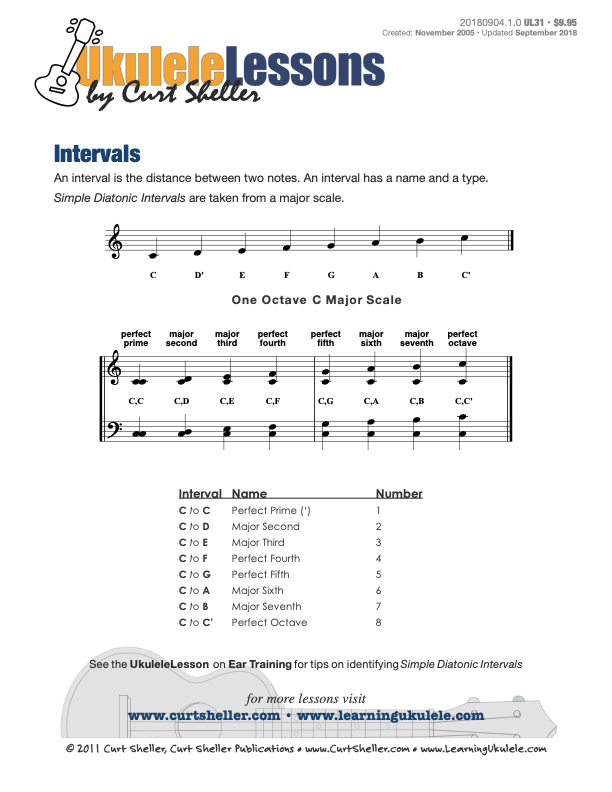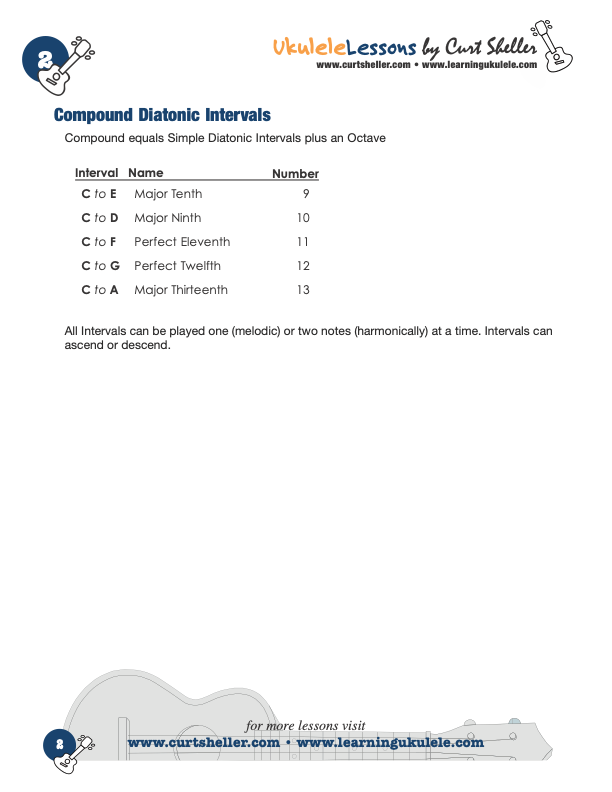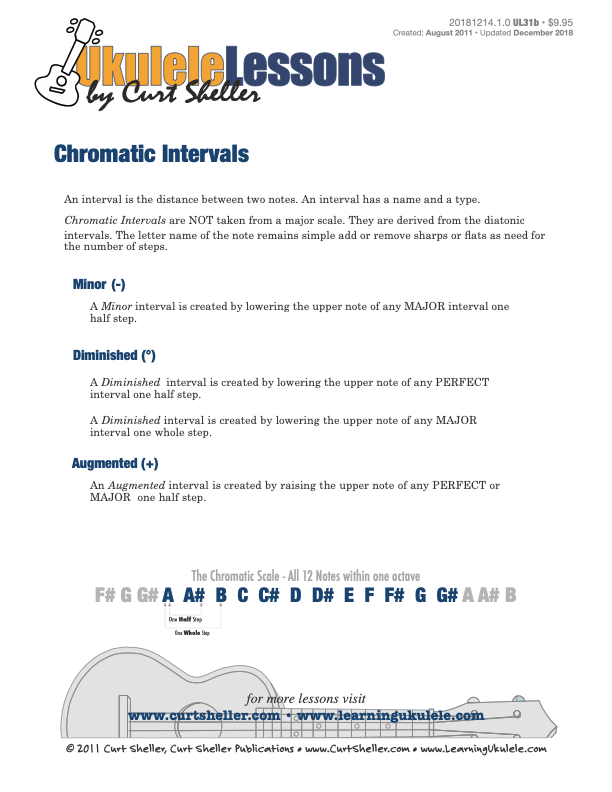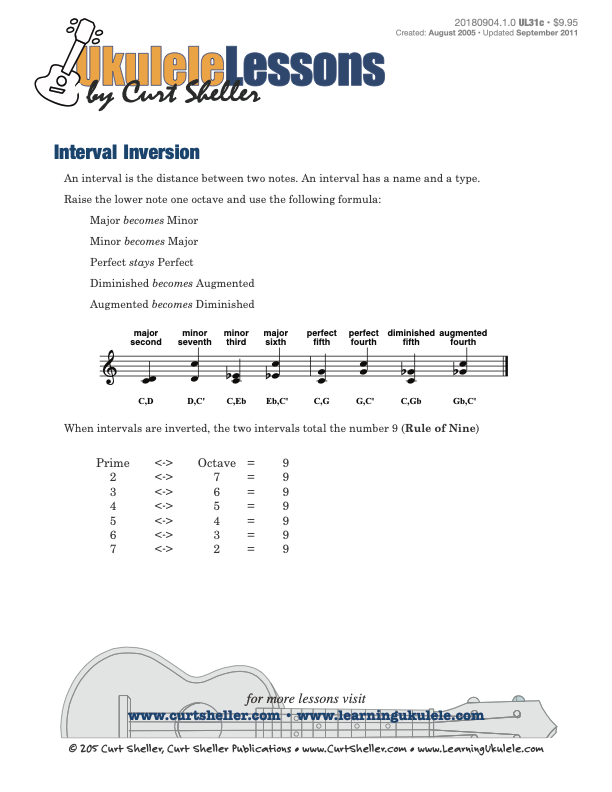An interval is the distance between two notes. An interval has a name and a type. Intervals can be played one note (melodic) or two notes (harmonic) at a time, ascending or descending. Simple and Compound Intervals are taken from a major scale. Chromatic Intervals are NOT taken from a major scale. They are derived from the diatonic intervals.




An interval is the distance between two notes. An interval has a name and a type. Intervals can be played one note (melodic) or two notes (harmonic) at a time, ascending or descending.
Available for Premium Site Access Plans Only
Simple and Compound Intervals are taken from a major scale.
Chromatic Intervals are NOT taken from a major scale. They are derived from the diatonic intervals.
An interval is the distance between two notes. An interval has a name and a type. Intervals can be played one note (melodic) or two notes (harmonic) at a time, ascending or descending.
Available for Premium Site Access Plans Only
Simple and Compound Intervals are taken from a major scale.
Chromatic Intervals are NOT taken from a major scale. They are derived from the diatonic intervals.
Understanding Diatonic Intervals
Calculating The Distance Between Two Notes
The distance part of an interval can be determined by counting the lines and space from the bottom note to the top note.
NOTE: You can use the audio examples below to do some ear training. Play the interval, sing the interval (do, re, me ,fa, sol, la, ti, do). Sing the interval and check how accurate you are.
Major Second: C to D
- Frere Jacques, Do A Dear, Silent Night, First two notes of a major scale.


Major Third: C to E
- Michael Row Your Boat Ashore, When the Saints Go Marching In, Kum By Ya, Ob-la-di Ob-la-da (The Beatles), Have Yourself a Merry Little Christmas


Perfect Fourth: C to F
- Here Comes the Bride, The Look of Love, Amazing Grace, Auld Lang Syne, Love Me Tender


Perfect* Fifth: C to G
- Twinkle Twinkle Little Star, My Favorite Things, Theme from Star Wars, Hey There Georgie Girl, Can't Help Falling In Love, Blue Skies


* All intervals of a Diatonic Major Scale are Major unless both notes of the interval are in each other major scale. Then the interval is called Perfect.
Major Sixth: C to A
- My Bonnie Lies Over The Ocean, the N B C theme, I Heard the Bells, Take the A Train


Major Seventh: C to B
- Major Seventh: ( Do - Ti (Si) ) i.e., C to B
- Theme from Fantasy Island


Perfect Octave: C to C`
- Perfect Octave: ( Do - Do ) i.e., C to C
- Over The Rainbow


Ukulele Major Scale
Here is how the Simple Diatonic intervals layout on with the open position C Major scale on ukulele.

- Descending the Major Scale is the song.Joy to the World.
Related Lessons, Videos, Lesson Series, Songs, Books & Reference Charts, Resources & Assets, Workshops are below.

Daily Practice Material for the Contemporary Ukulele Player is an organized collection of daily practice and reference material for the contemporary ukulele player. This material can be used to develop the vocabulary and knowledge necessary for single note playing.

Finally, learn the names of the notes of the ukulele fingerboard in C tuning .

Learn the six fingering principles to navigating the ukulele fingerboard. Fingering is one of the most universal topics. Book: Six Secrets of the Ukulele Fingering

Harmonic Analysis is the understanding of the functional sequence of chords. It is the process used to analyze the harmonic structure of a progression, song or composition. Book: Harmonic Analysis for Scale Selection and Chord Substitution

Learn to read single note melodies in the first/open position is a lot easier than you might think. Book: Ukulele – Reading Music Series – Primer

An organized collection of daily practice and reference material for the contemporary ukulele player for developing the vocabulary and knowledge necessary for single note playing. Book: Daily Practice Material for the Contemporary Ukulele
Checkout the Books & Reference Charts for additional Handy, Dandy Reference Charts.

Ukulele Fingerboard Chart for C Tuning, Low or High G – G C E A

Ukulele Fingerboard Chart for G Tuning, Low or High A – D G B E

A handy reference chart of all 15 major and relative minor key signatures. US Letter 8.5 x 11 sized (ANSI-A), A4
Checkout the Books & Reference Charts for additional Handy, Dandy Reference Charts.





.jpg)